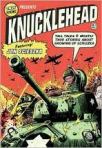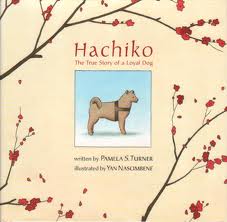Posts tagged ‘mutual respect’
149. Knucklehead by Jon Scieszka
 Retell: The subtitle says it all: “Tall Tales & Mostly True Stories About Growing Up Scieszka.”
Retell: The subtitle says it all: “Tall Tales & Mostly True Stories About Growing Up Scieszka.”
Topics: boys, brothers, growing up, catholic school, rough-housing, adventure, reading, family
Units of Study: Memoir, Personal Narrative, Nonfiction
Tribes: Mutual Respect, Appreciations/No Put-Downs
Habits of Mind: Finding Humor
Reading Skills: Understanding figurative language and humor
Writing Skills: Balancing dialogue with description and inner thinking, including prologues
Thoughts: This is a must-read for any teacher who plans on doing a Personal Narrative or Memoir unit. Most stories are short (1-3 pages), hilarious and at times disgusting. I personally love the story entitled, “Car Trip,” a story about brothers in the back of a car reacting to a cat puking. Many of the stories end with a reflection making them ideal mentor texts if you’re teaching Memoir. One story, “Random Reading” may be useful during a Nonfiction unit. In this story he talks about enjoying the diagrams found within the pages of the Golden Book Encyclopedia series. Jon Scieszka writes particularly with boy readers and writers in mind. If you haven’t already, check out his website called Guys Read.
147. Hachiko: The True Story of a Loyal Dog by Pamela S. Turner
 Retell: Everyday Hachiko accompanies his owner, Dr. Ueno to Shibuya Station and patiently awaits his return. When Dr. Ueno doesn’t return one day Hachiko continues to wait at the station…for ten years.
Retell: Everyday Hachiko accompanies his owner, Dr. Ueno to Shibuya Station and patiently awaits his return. When Dr. Ueno doesn’t return one day Hachiko continues to wait at the station…for ten years.
Topics: dogs, Japan, loss, loyalty, Tokyo
Units of Study: Nonfiction, Memoir
Tribes: mutual respect, appreciations/no put downs
Habits of Mind: persistence
Writing Skills: using imagery, describing setting details
My Thoughts: A colleague of mine gave me this book as a gift knowing my connection with Japan. I taught in Japan for three years. Last summer when I visited Japan again I took a trip to Shibuya Station and learned about the story of Hachiko.
I’m not sure if I’d be able to read this book out loud to my class without crying, or making someone else cry. It’s such a beautiful book though. I can see using this as a mentor text for showing how writers describe the setting. Many of my students have difficulty describing anything but the weather. This text shows how a writer takes time to describe the ‘action’ of the setting–the movement of the crowd, the clothes the people are wearing, etc.
145. The Lorax by Dr. Seuss
 Retell: A boy visits the home of the Once-ler who, for a fee, tells him the story of how he destroyed the pristine Truffula Forest and its inhabitants.
Retell: A boy visits the home of the Once-ler who, for a fee, tells him the story of how he destroyed the pristine Truffula Forest and its inhabitants.
Topics: trees, deforestation, environment, environmentalists, pollution, consumption, greed, factories, habitat, animals, Earth Day
Units of Study: Social Issues, Content Area, Talking and Writing About Texts
Tribes: Mutual Respect
Reading Skills: inference, interpretation
Writing Skills: incorporating rhyme and rhythm, connecting the beginning with its ending
My Thoughts: I recently read this book to my class to celebrate Earth Day. There were misty eyes when the last truffula tree was cut down; I have never heard the room so quiet. Upon rereading I noticed how well the illustrations supported inferential thinking throughout the story. Specifically, the color of the illustrations helps support the idea that without trees the world is a dark, miserable place. In the beginning of the story, the pages are illustrated in dark tones: navy, burgundy, and gray. When the Once-ler flashes back to the first days of his Thneed venture, the illustrations are painted in bright, cheerful hues: magenta, yellow, green and turquoise. One student pointed out toward the beginning of the story, while the illustrations were still bright and cheery, the Once-ler’s materials were painted in dark tones, a premonition that the environment was going to change for the worse.
140. When the Shadbush Blooms by Carla Messinger with Susan Katz
 Retell: A Lenape Indian girl describes how her family has worked, played and celebrated throughout the seasons and throughout the generations.
Retell: A Lenape Indian girl describes how her family has worked, played and celebrated throughout the seasons and throughout the generations.
Topics: Lenni Lenape, generations, past, present, cycles, family, seasons, farming, nature
Units of Study: Nonfiction, Content Area, Memoir
Tribes: mutual respect
Reading Skills: monitoring for sense, interpretation, synthesis
My Thoughts: This is a great text to support a Social Studies unit on the Lenni Lenape. In this book, the illustrations really tell the story and support interpretation work. The narration is illustrated on the right hand pages: A modern Lenape family farms, weatherizes their house to prepare for winter, fishes for shad, and plays games in the snow. On the left hand pages, a Lenape family from the past do the same activities.
138. Jose! Born to Dance by Susanna Reich
 Retell: This is the story of Jose Limon, who left his family to move to New York. Frustrated by his poor artistic talent he fell in love with dance and worked to become a famous dancer and choreographer.
Retell: This is the story of Jose Limon, who left his family to move to New York. Frustrated by his poor artistic talent he fell in love with dance and worked to become a famous dancer and choreographer.
Topics: dance, war, family, Mexico, immigration, art, music, English, Spanish, death, New York, California
Units of Study: Nonfiction, Social Issues
Tribes: personal best, appreciations/no put-downs, mutual respect
Habits of Mind: persisting
Reading Skills: synthesis, monitoring for sense, envisionment
Writing Skills: using sound effects, zooming in on a small moment
My Thoughts: This text has multiple teaching purposes. It’s a great text for introducing or reinforcing the habit of mind–persistence. There are many moments in the story when Jose persists. He struggles to learn English but persists despite his cruel classmates. He is determined to become a dancer and shows persistence each day during rehearsal despite sore, aching muscles. During the read aloud we can hope that students understand that successful people, no matter what their focus, work hard and persist, even when they face adversity.
136. Harvesting Hope: The Story of Cesar Chavez
 Retell: This is the biography of Cesar Chavez, the leader of the National Farm Workers Association who worked to organize farm workers to rally together and fight for better pay and working conditions.
Retell: This is the biography of Cesar Chavez, the leader of the National Farm Workers Association who worked to organize farm workers to rally together and fight for better pay and working conditions.
Topics: family, Cesar Chavez, conflict, drought, California, farming, Spanish, migrant workers, unions, La Causa, strikes, protests, boycotts, farm workers
Units of Study: Nonfiction, Social Issues
Tribes: personal best, mutual respect, appreciations/no put-downs
Habits of Mind: persisting
Reading Skills: inference, interpretation, determining importance, synthesis, empathy
My Thoughts: Back when I taught in California this was required reading–in the Bay Area Cesar Chavez’s birthday is a school holiday. This book could fit into different types of text sets. For example, you could include this book when teaching a unit on the labor unit. You could also choose to read this book as a companion text to Esperanza Rising.
134. Between Earth and Sky: Legends of Native American Sacred Places by Joseph Bruchac
 Retell: On the way to a pow-wow Old Bear teaches his nephew Little Turtle about the legends connected to the sacred places of other Native American tribes.
Retell: On the way to a pow-wow Old Bear teaches his nephew Little Turtle about the legends connected to the sacred places of other Native American tribes.
Topics: legends, Native Americans, sacred places, Wampanoag, Seneca, Niagara Falls, Navajo, Cherokee, Papago, Hopewell, Cheyenne, Hopi, Abenaki, Walapai, Grand Canyon
Units of Study: Content-Area, Nonfiction, Talking and Writing About Texts
Tribes: mutual respect
Reading Skills: envisionment, interpretation
My Thoughts: This is a great read aloud for integrating map skills. Using the clues in each legend, students could try and figure out which place is being described. A copy of the map in the back of the book could be distributed to students during the read aloud and partners could work together to locate each sacred place on the map.


